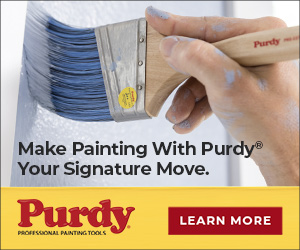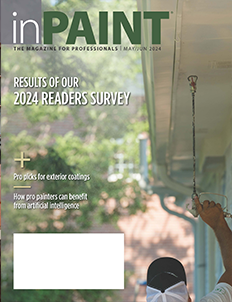ASK A PRO: Q: What’s your approach to avoiding potential price objections?
 A: For me, the best way to make customers understand why a job costs what it does is to educate them on the process necessary for me to deliver the workmanship they are hiring me for. So, I walk them through the process, step by step.
A: For me, the best way to make customers understand why a job costs what it does is to educate them on the process necessary for me to deliver the workmanship they are hiring me for. So, I walk them through the process, step by step.
I’ve been at this for 40 years and handle a lot of higher-end homes, some historic properties, and even museums. I work with a couple of decorators and builders but most of the bidding is direct to customers, some of whom I’ve had for 35 years.
When I’m bidding a job, I first get a read on what they want their job to be on an aesthetic range from 1 to 10. I then talk with the customer about the four things that are non-negotiables for me to provide a satisfying paint job.
The first is cleanliness. I make sure the customer understands the importance of having a clean surface or substrate and I discuss what needs to be done to achieve that in their circumstance, and why it matters.
The second is dryness. I want them to understand the importance of a moisture level to getting proper penetration.
Third is a sound surface. I’ll do a tape test and help them appreciate that if the existing coating is coming off, the next one probably will, too. If they want me to paint on the coating as is, that’s fine but they have to accept that there will be problems in the future and that it won’t have been created by my work.
The fourth one is getting it dull. That is, sanding to get some tooth on the surface. Personally, I think this is the most important step and I want to make sure the customer appreciates why it matters. I don’t care what manufacturers say about no-sand products. For the time it takes to sand, it’s just good insurance and I think it’s a mistake not to do it.
For me, those four things are cardinal to every job.
So, I go over those steps and explain this is the process I follow to make sure the paint sticks to the surface. I do it because it’s the right thing to do for the job now, and to ensure that the next guy isn’t going to have a problem with what I put on.
I like to tell customers that paint is a lot like winter weight. It goes on really easy but can be a bear to get off. You do it wrong, it’s going to be a big problem down the road.
In some instances, I also provide some education on products. Most recently, I was doing a job for a historic society and spent some time talking with board members about preservatives and epoxy repair, as part of the bid. It takes time to explore rot and talk about the different borate-product options. But in the end, I gain customer confidence and, in that case, the bid.
In the end, my approach isn’t what everyone wants or needs—or wants to pay for. But if it doesn’t sound realistic or like what they want, that’s fine. No hard feelings.
For me, there’s a lot of pleasure to be had in making projects look good and doing the work to the best of my ability. If I can help a customer understand that up front, and also understand what it takes to make it look good, then I know the project is going to be a good fit for all. My customer will value and appreciate the workmanship I provide, and the job will be profitable for me. We all win.
__________________________________________________________________________________
 Charles Gilley is the owner of Restoration Painting, LLC in South Woodstock, VT. In his 40 years of running his paint and wallpapering business, he’s run crews as large as 10 but, more recently, has happily settled in at a crew of two, including himself. He is a long-standing member of the PDCA and has presented at the organization’s Craftsmanship Forum.
Charles Gilley is the owner of Restoration Painting, LLC in South Woodstock, VT. In his 40 years of running his paint and wallpapering business, he’s run crews as large as 10 but, more recently, has happily settled in at a crew of two, including himself. He is a long-standing member of the PDCA and has presented at the organization’s Craftsmanship Forum.




